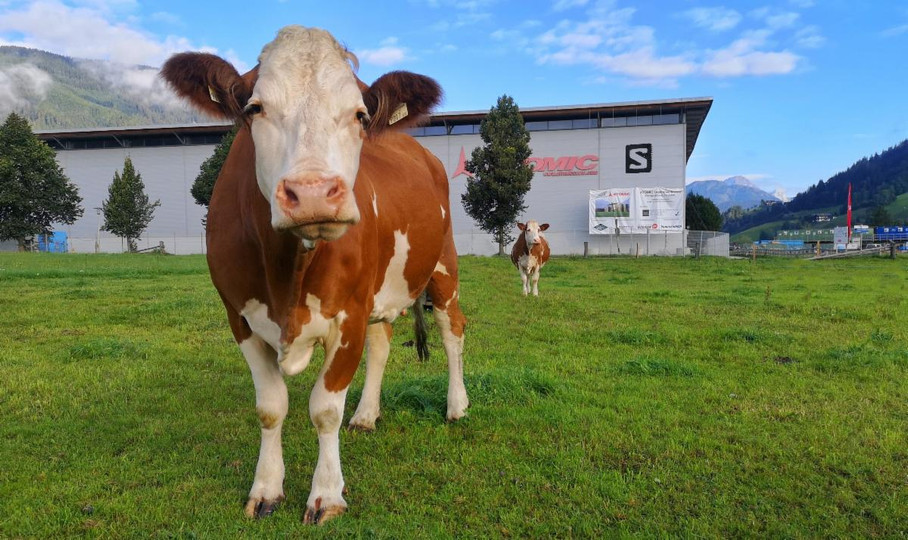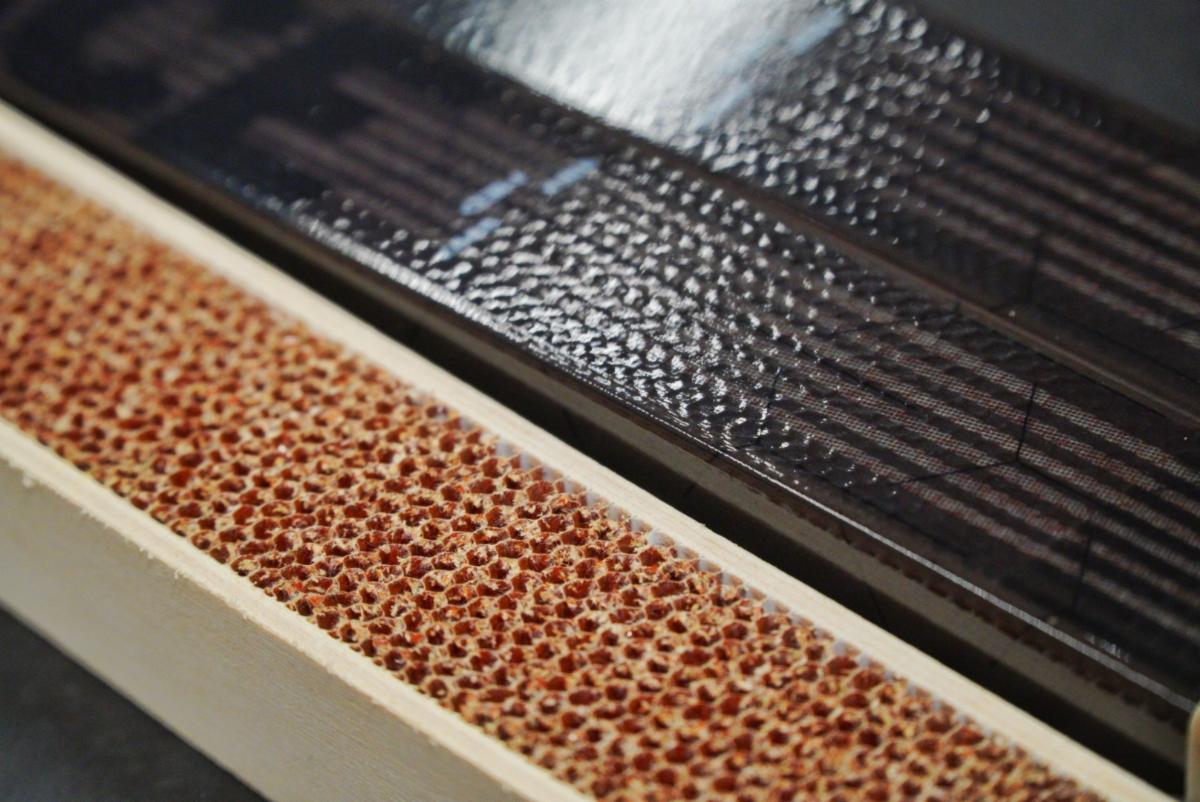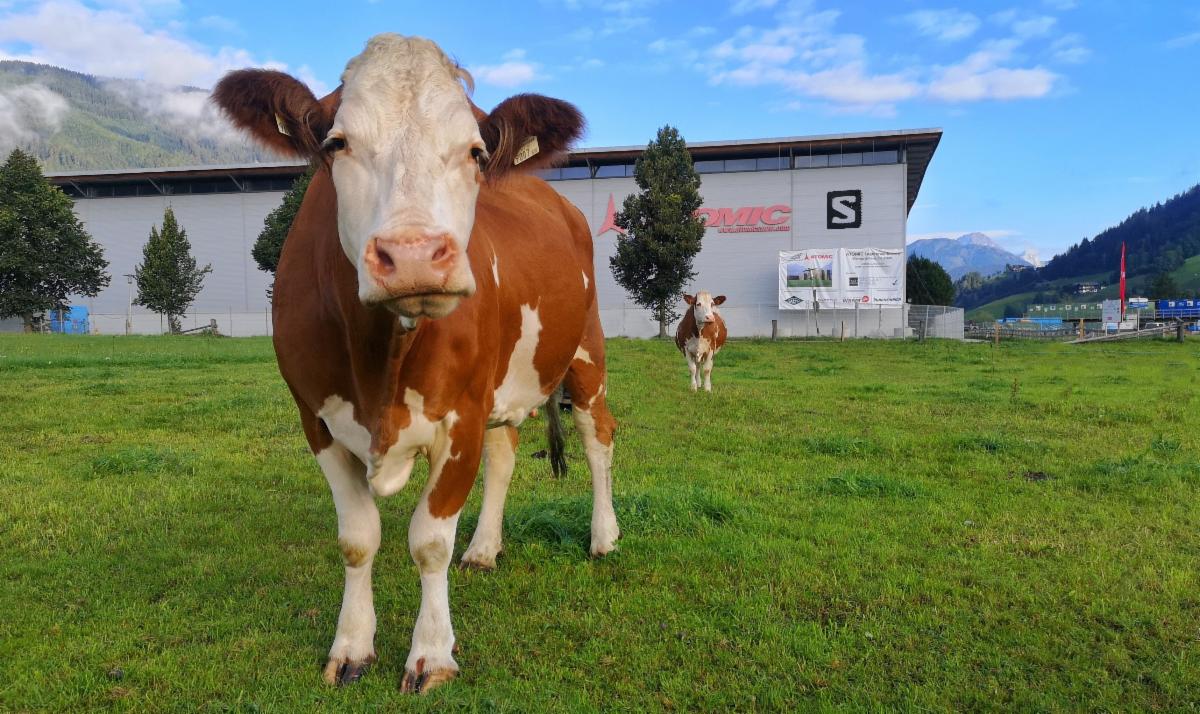Posted by Garrott Kuzzy on Nov 17th 2019
Travel: Garrot Kuzzy visits Salomon Factory

Garrott Kuzzy and Jean-Marc Draeyer check out the finished Salomon skis after a factory tour in Altenmarkt, Austria |
Altenmarkt, Austria By Garrott Kuzzy Altenmarkt, Austria sits in the valley below the face of the Dachstein mountain. The lush green valley is home to 4,000 inhabitants and about as many grazing brown cows. On the edge of town, past the cobbled pedestrian streets lies the Atomic - Salomon ski factory. It is not hard to understand why this valley might attract skiers, surrounded by alpine ski hills on almost all sides. I stopped in to check out the facility and get a better understanding of how skis are produced. Jean-Marc Draeyer, Salomon's head of race ski production, took time away from selecting skis for the world's top racers and specialty Nordic shops to take me on a tour of the facility. Photos are not allowed, but the process was enlightening, especially how the flex is literally baked into the ski to perform for specific conditions. At their core, high end skis are identical to airplane wings. Nomex is a honeycomb product known for its high strength to weight ratio, ideal for skis and wings alike--anyone who wants to fly. Sheets of poplar wood panel are glued and pressed to the honeycomb, making what will become the ski's internal sidewall. The poplar is sourced locally, as the highest quality possible is necessary to keep a consistent shape for the life of the ski. At this point, the honeycomb-poplar panels look more like something you might use to insulate a house. The panels are then cut into the shape of a ski. As many as 20 skis might come from one panel. The tip and tail of the skis are also added separately. The tips and tails look about as thin as a piece of paper and have no shape.
A metal mold is produced in the factory for each ski model and length. Each ski component is laid into the mold, starting with the base, a thin layer of carbon and another layer that acts like an arch support in a shoe. Next, the honeycomb-wood core is the most important ingredient in the sandwich, followed by another layer of carbon and the graphics on top. The ski in the mold is now ready for the press. The ski press heats up the mold and components enough to adhere everything together. How are skis given their flex? What makes a ski good for wet, soft or hardpack conditions? This is not random. Before the ski mold goes into the press, one of 36 pressure points can be tuned like a Steinway to create exactly the desired flex for each ski. Seeing this took a lot of the mystery out of ski flex for me. The skis coming out of the mold are laser flex tested to confirm the desired results. At this point, the product resembles a ski, but is still very rough around the edges. Literally. There is still material and glue coming out of the seams. The ski looks a lot like a sandwich with a few too many ingredients. To finish the ski, it is sent down what looks like a 100 foot long Rube Goldberg machine for skis. Along the track, the sidewalls are cut and polished, the groove cut out of the middle and the rest of the base is ground to the desired specifications. At this point, the skis look finished, but there is one more step: each individual ski is flexed again, then paired together before being assigned serial numbers and prepared for shipment. If you look at your own skis, you can likely see the texture of the honeycomb pressed between the layers, ready for you to fly on the trails. From the factory in Altenmarkt, skis are shipped to all corners of the Earth. Simi Hamilton has recently been testing his new Salomons in the ski tunnel in Oberhof, Germany and Jessie Diggins is training on hers in at the Snow Farm in New Zealand. Skis are also starting to arrive in shops, ready to glide on snow this winter. See you on the trail, Garrott
|



